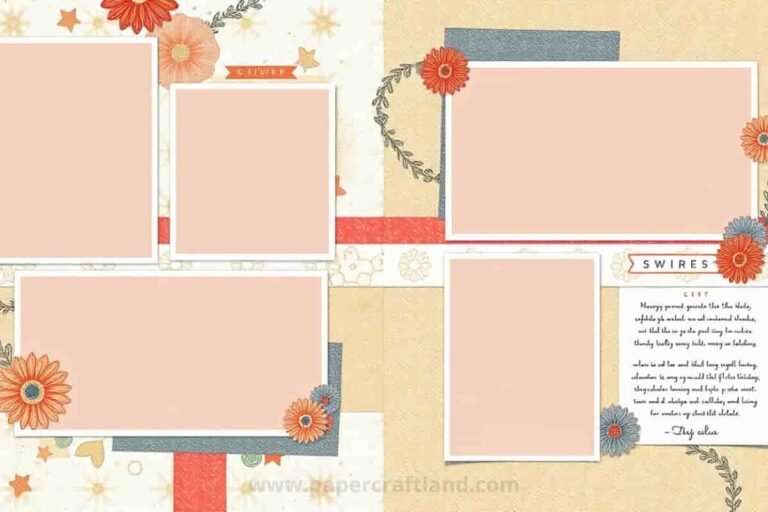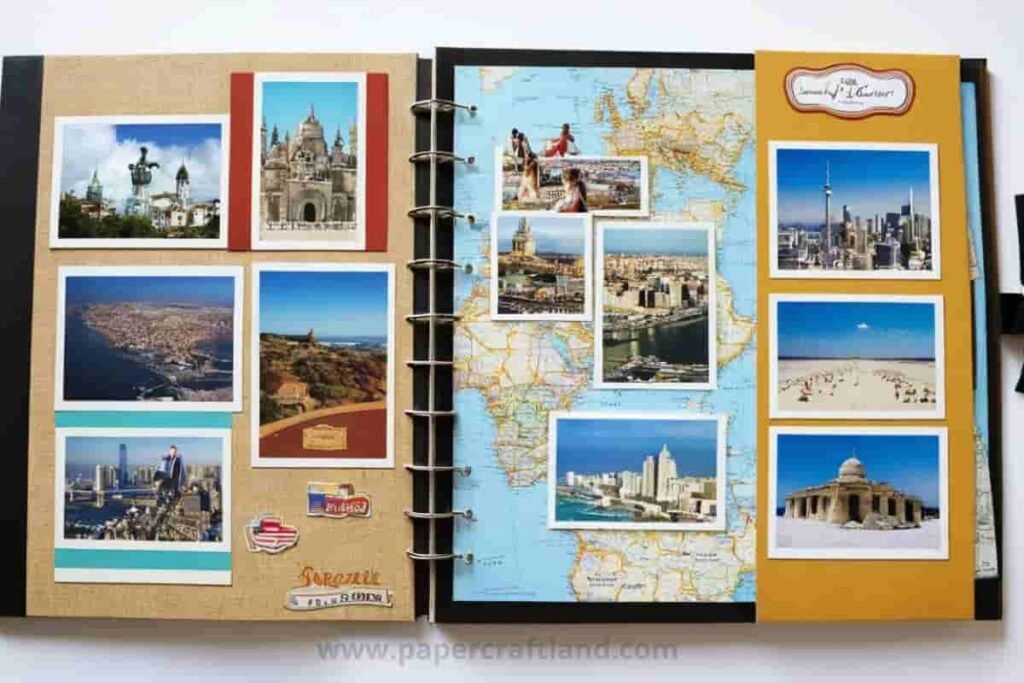Introduction
Scrapbooking is more than just a hobby; it’s an art form, a memory-keeper, and a personal story told through paper, embellishments, and photographs.
At its core, scrapbooking allows individuals to creatively preserve their memories, moments, and life events in a beautifully artistic way. From family milestones to cherished vacations, scrapbooks are a way to document life with a personal touch.
But what exactly is scrapbooking, and why is it such a cherished activity for so many?
What is Scrapbooking?
Scrapbooking is the process of compiling photos, memorabilia, and other paper-based items into a decorative album. It’s not just about sticking photos in a book; it’s about presenting them in an artistic, thoughtful, and often narrative-driven way.
This creative process allows people to use a wide variety of supplies such as patterned paper, stickers, stamps, and decorative embellishments to enhance the visual appeal of their scrapbook.
The History of Scrapbooking
Scrapbooking has roots that date back centuries. In the 15th century, people began keeping what was known as “commonplace books,” where they recorded recipes, quotes, and bits of information that were important to them.
By the 1800s, scrapbook albums evolved, often including newspaper clippings, pressed flowers, and even calling cards.
However, the modern-day scrapbooking boom started in the late 20th century, particularly in the 1980s, as photo printing became more accessible, and scrapbooking supplies became more diverse and specialized.
Today, scrapbooking remains a thriving industry, with options ranging from traditional methods to high-tech digital scrapbooking.
Why is Scrapbooking So Popular?
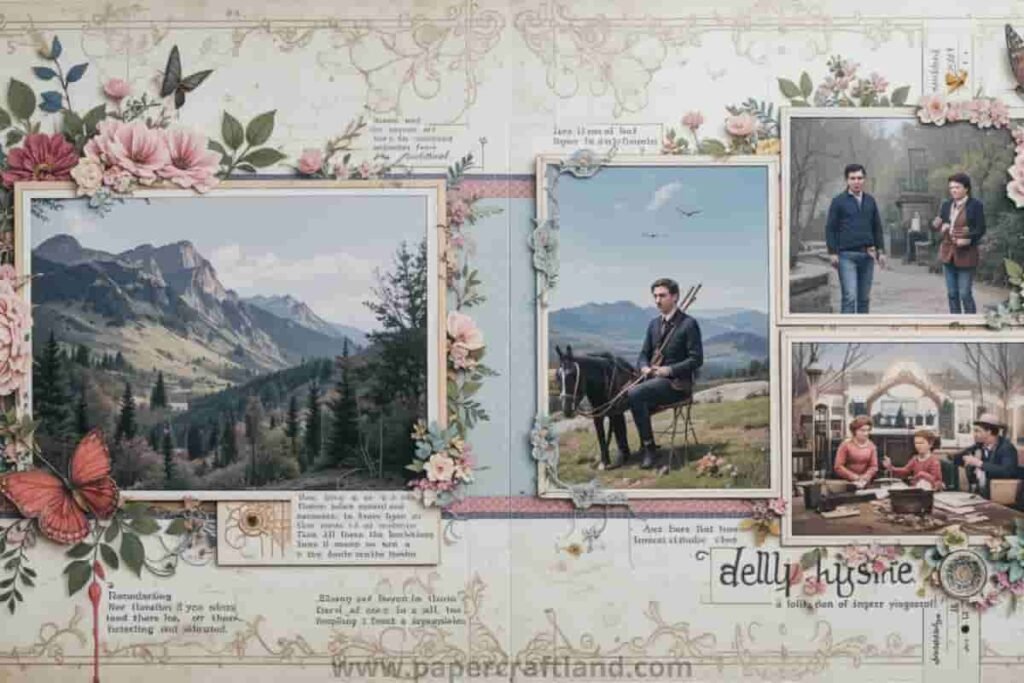
One reason scrapbooking has endured through the ages is its blend of creativity and sentimentality. It combines the artistic freedom to craft something beautiful with the emotional satisfaction of preserving precious memories.
Whether you’re a seasoned crafter or someone looking for a new way to document life’s milestones, scrapbooking offers a personal and tangible way to capture the stories that matter most.
The Benefits of Scrapbooking
Scrapbooking isn’t just about creating something pretty—it offers several personal and emotional benefits that can enhance your life in ways you might not expect.
Enhances Creativity
Scrapbooking taps into your creative side, challenging you to think outside the box in terms of design, layout, and storytelling.
Whether you’re choosing color schemes, selecting embellishments, or arranging your photos, every step of the process allows you to express yourself artistically.
Emotional and Therapeutic Benefits
For many people, scrapbooking is a therapeutic experience. Sorting through photos and mementos allows you to reflect on happy memories, bringing a sense of nostalgia and contentment.
It’s also a great stress-relief activity, helping you unwind and escape into a peaceful, creative space.
Preserving Memories for Future Generations
In the digital age, so many of our memories are stored on phones and hard drives. Scrapbooking, however, provides a tangible, physical way to preserve memories for future generations.
There’s something deeply personal about flipping through a handcrafted scrapbook that tells the story of a life well-lived.
Essential Scrapbooking Supplies
One of the most exciting parts of scrapbooking is shopping for supplies! Here’s a quick rundown of the essential materials you’ll need to get started:
Paper and Cardstock
Paper is the foundation of every scrapbook page. You can use patterned paper, solid-color cardstock, or specialty paper (like vellum or glitter paper) to set the tone of each layout.
Adhesives
To ensure your photos and decorations stay put, you’ll need various adhesives such as glue dots, double-sided tape, or a glue stick. Be sure to use acid-free adhesives to protect your photos.
Cutting Tools and Scissors
Investing in good-quality scissors and paper trimmers will make it easier to create straight edges and cut intricate shapes. Many scrapbookers also use craft knives for more detailed cutting.
Stickers, Embellishments, and Stamps
These are the fun details that add personality to your pages! Stickers, stamps, and embellishments like buttons, washi tape, and die cuts can enhance your theme and layout.
Scrapbook Albums and Page Protectors
Choose a sturdy album to hold your pages. Page protectors will keep your layouts safe from dust and wear over time, ensuring that your memories last.
Different Types of Scrapbooking
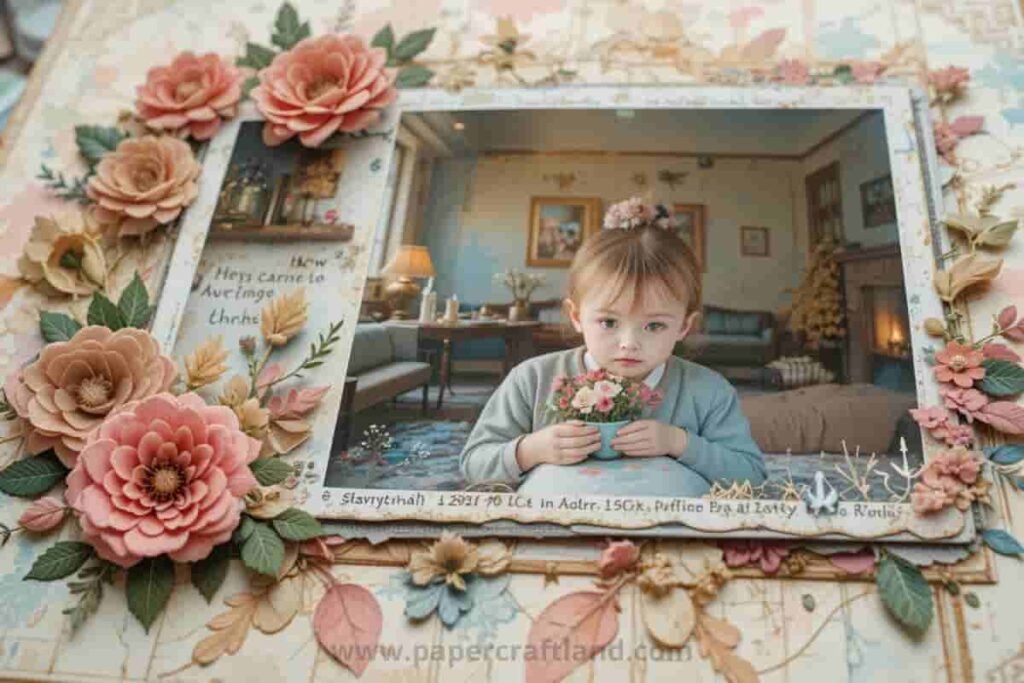
Scrapbooking has evolved over the years, leading to several distinct styles and techniques that cater to different preferences and skill levels.
Below are the three main types of scrapbooking, each offering unique ways to capture memories and express creativity.
Traditional Scrapbooking
Traditional scrapbooking is the classic form where physical materials like paper, photos, and embellishments are arranged on a page. It involves:
- Hand-Crafted Layouts: You create each page by hand, using scissors, glue, and other craft tools.
- Personal Touch: The tactile nature allows for a highly personalized feel, with options to add layers, textures, and even 3D elements like buttons, ribbons, and stickers.
- Unique Memorabilia: This method allows for the inclusion of physical mementos, such as ticket stubs, postcards, or pressed flowers, which make the pages feel even more personal and sentimental.
Traditional scrapbooking is perfect for people who love hands-on crafting and want to display their work in a physical album that can be cherished for years.
Digital Scrapbooking
In digital scrapbooking, you create layouts on a computer using design software like Adobe Photoshop, Canva, or specialized scrapbooking programs. Here’s what sets it apart:
- Digital Elements: Instead of physical supplies, you use digital papers, embellishments, fonts, and photos. Everything is done on your computer, making it a mess-free option.
- Unlimited Revisions: Mistakes can be easily corrected, and layouts can be edited and adjusted at any time. This makes it ideal for those who prefer flexibility and precision.
- Easily Shareable: Digital scrapbooks can be shared online with friends and family or printed into photo books for a polished finish.
This type is great for tech-savvy individuals who enjoy working with digital tools and want the convenience of storing and sharing their scrapbooks electronically.
Hybrid Scrapbooking
A mix of both traditional and digital methods, offering the best of both worlds:
- Printed Digital Designs: You can create some elements digitally (like titles or backgrounds) and print them out to combine with physical items on your page.
- Physical & Digital Blend: Hybrid scrapbooking allows you to use real embellishments, such as fabric or buttons, alongside printed digital designs, offering more creativity and flexibility.
- Customizable: It lets you personalize layouts while still taking advantage of the convenience and variety of digital tools.
Hybrid scrapbooking is ideal for those who enjoy the hands-on aspect of traditional scrapbooking but want to incorporate digital design elements for more options and ease of use.
Choosing a Theme for Your Scrapbook
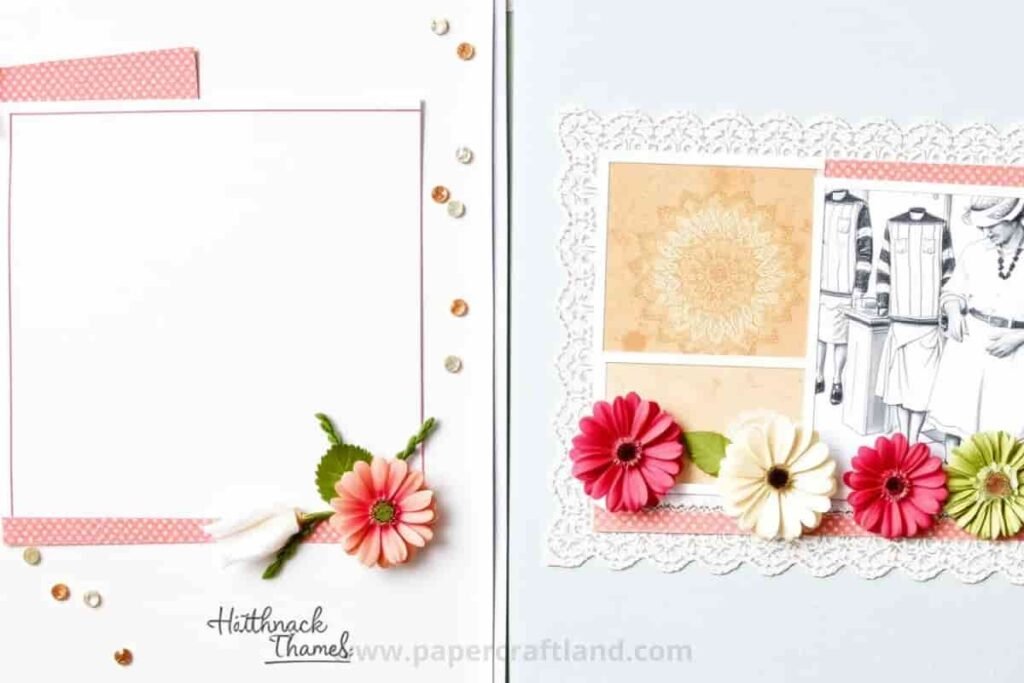
One of the first steps in starting a scrapbook is deciding on a theme. Here are a few popular themes to inspire you:
Travel Memories
Document your adventures abroad or your weekend getaways with a travel-themed scrapbook. Use maps, travel tickets, and postcards to enhance your pages.
Family Milestones
From birthdays to graduations, a family milestone scrapbook captures the important moments in your loved ones’ lives. This kind of album makes for a wonderful family heirloom.
Holiday Scrapbooks
Create a scrapbook that focuses on annual holidays such as Christmas, Halloween, or Thanksgiving. Document your traditions, festive decorations, and family gatherings.
Baby’s First Year
There’s nothing more precious than capturing the first year of your baby’s life in a scrapbook. Document their first smile, first steps, and all the little moments in between.
Event-Based Scrapbooks (Weddings, Birthdays, Graduations)
A single event can make for a beautifully themed scrapbook. Wedding albums are particularly popular, but you can also create albums for birthdays, graduations, or even a special party.
Planning Your Scrapbook Layout
Planning your layout before you start crafting can save you time and help your page flow better.
The Importance of a Layout
A well-planned layout ensures that all your elements, from photos to embellishments, work together cohesively. Think about how you want to arrange the page so that it tells a story.
Organizing Photos and Memorabilia
Before you glue anything down, sort through your photos and memorabilia. Decide which pieces you want to feature prominently and which can serve as background elements.
Creating a Color Scheme and Style
Choose a color palette that complements your theme. For instance, a beach vacation might inspire soft blues and sandy neutrals, while a birthday layout could be bright and colorful.
Layering and Page Composition
Layering paper, photos, and embellishments creates depth and visual interest. Try placing elements at different angles or overlapping them for a more dynamic page.
Creative Techniques for Scrapbooking

Looking to elevate your scrapbook to the next level? Incorporate these creative techniques into your layouts:
Using Washi Tape and Borders
Washi tape is a versatile, decorative material that can add pops of color, texture, or borders to your pages. Use it to frame photos or create patterns.
Incorporating Journaling and Captions
Remember to share the story behind your photos! Journaling adds a personal touch and helps future generations understand the significance of the images.
Playing with Textures
Add visual interest by mixing materials such as fabric, ribbon, or textured paper. Combining different textures will make your pages more engaging to look at.
Using Die Cuts, Punches, and Stencils
Die cuts and stencils allow you to create intricate designs quickly. You can use them to add unique shapes, titles, or decorative borders to your pages.
How to Create 3D Elements
Give your scrapbook a pop by using 3D embellishments such as raised stickers or layered paper flowers. These elements add depth and make your pages stand out.
Conclusion
In summary, scrapbooking is much more than just an artistic pastime—it’s a way to capture memories, express creativity, and preserve the stories that matter most to you.
Whether you’re documenting your travels, family milestones, or day-to-day moments, scrapbooking offers a tangible, heartfelt way to treasure those memories for years to come. Ready to dive in? Just remember, it’s not about perfection—it’s about enjoying the journey and making something that’s uniquely yours.
FAQs
- What is the main purpose of scrapbooking?
Scrapbooking preserves memories in a creative, personalized way, combining photos, memorabilia, and artistic elements to tell a story.
- Can scrapbooking be done digitally?
Yes, digital scrapbooking uses software to create layouts on a computer, offering a modern approach to traditional methods.
- What are essential supplies for beginners?
Beginners need paper, adhesives, scissors, embellishments, and a sturdy album to get started with scrapbooking.
- How do you choose a scrapbook theme?
Choose a theme based on events or memories you want to document, such as travel, family milestones, or holidays.
- What is hybrid scrapbooking?
Hybrid scrapbooking combines digital and traditional elements, allowing you to print digital designs and mix them with physical embellishments.
- Why is scrapbooking emotionally beneficial?
Scrapbooking helps you reflect on cherished memories and offers a relaxing, therapeutic creative outlet.
- Can you make money from scrapbooking?
Yes, many turn scrapbooking into a business by selling custom albums, and kits, or offering scrapbooking classes and services.

